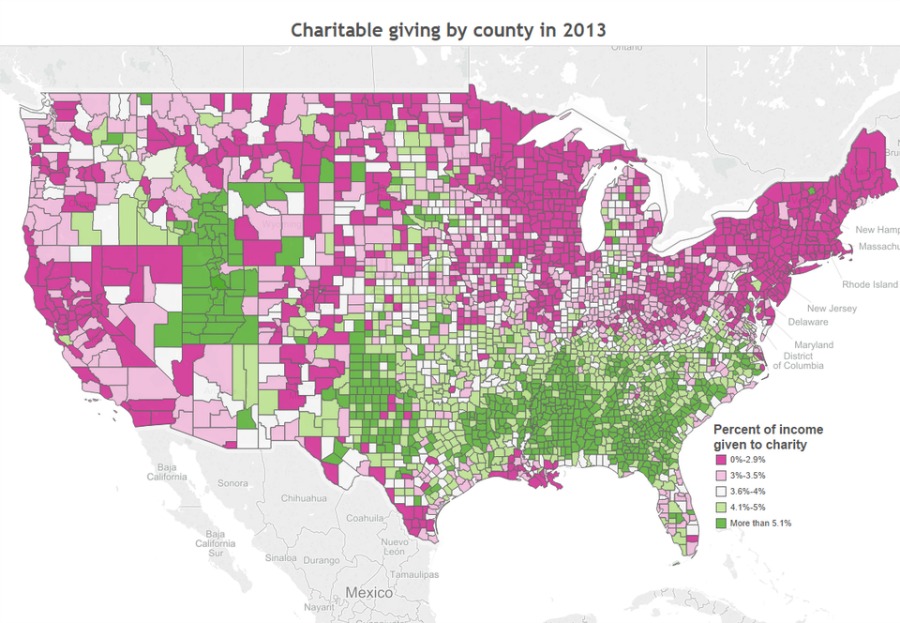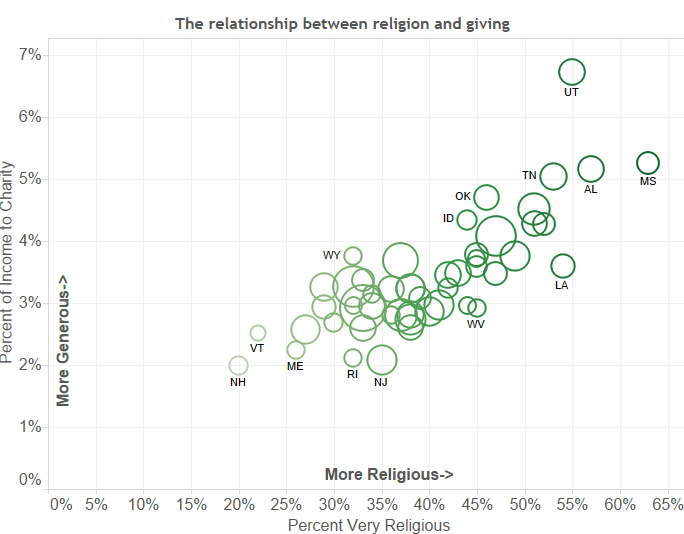The Widow’s Mite: Poorer, More Religious Give Most
Remember the parable of the widow’s mite? Apparently, that’s not so far from reality.
According to recent data from the IRS, some of the poorest counties in America are also the most generous. Rather than the wealthiest parts of America contributing the highest charitable donations, many rural communities in Utah, southern Idaho, and the South rank higher for charitable donations.
Of the top 50 counties who donated the highest percentage of their income, 48 counties were in Utah, Idaho, or southern states.

Some of the wealthiest communities in America, who reside in the Northeast and West Coast, donate an average of 0%–2.9% of their annual income, while many impoverished communities in Mississippi, Alabama, and Texas contribute more than 5.1% of their income to charity.
However, these numbers don’t occur only by chance.
Research also shows that religious communities tend to donate a higher percentage of their income. A study conducted by Gallup reveals the direct correlation between religious affiliation and charitable donations.

While wealthy communities in the West Coast and Northeast consider themselves as less religious, many communities in Utah, southern Idaho, and the South claim strong religious affiliation.
To be exact, members of The Church of Jesus Christ of Latter-day Saints densely populate Utah and southern Idaho, and the South consists of many strong evangelical Christian communities. Members of both faiths believe in contributing tithing, which mean that they donate 10% of their income.
In The Church of Jesus Christ of Latter-day Saints, members are encouraged to pay additional offerings past the 10% tithing on their income to provide relief for the poor and needy in their own communities and worldwide.
America seems to be following the trend that Jesus Christ noticed in the New Testament:
“Many that were rich cast in much . . . but [the widow] of her want did cast in all that she had, even all her living.”


